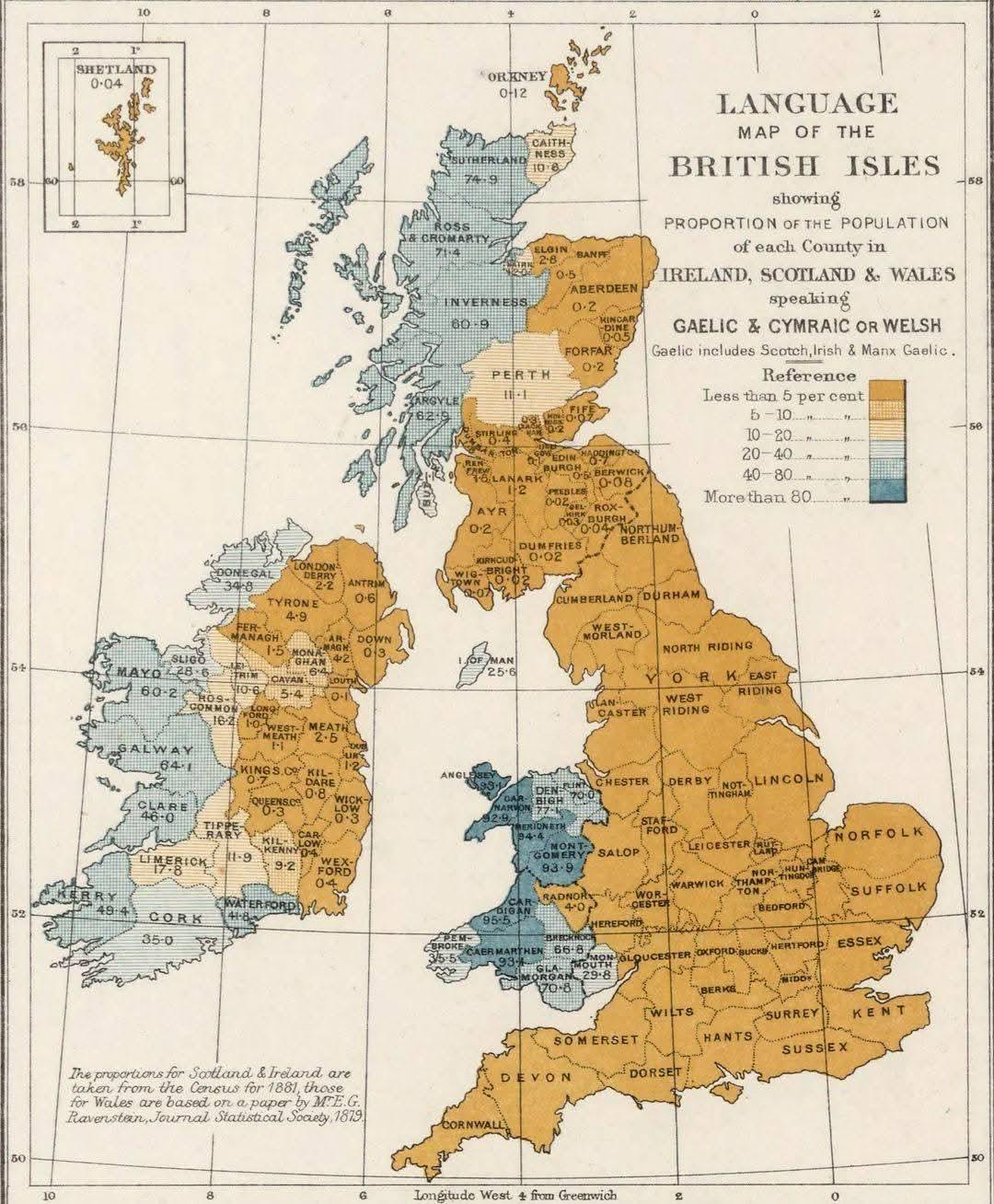Celtic Languages Map of 1877


Alex Cartwright
Senior Cartographer & GIS Specialist
Alex Cartwright is a renowned cartographer and geographic information systems specialist with over 15 years of experience in spatial analysis and data...
Geographic Analysis
What This Map Shows
The "Celtic Languages in 1877" map provides a detailed visualization of the geographic distribution of Celtic languages at a significant moment in history. It highlights the areas where these languages were spoken, showcasing the vibrant cultures and communities that utilized them. In the late 19th century, the Celtic languages were primarily concentrated in parts of the British Isles and Brittany in France, reflecting a rich linguistic heritage that has evolved over centuries.
Deep Dive into Celtic Languages
Celtic languages belong to the larger Indo-European language family and are divided into two main branches: Goidelic (or Gaelic) and Brythonic (or Brittonic). The Goidelic languages include Irish, Scottish Gaelic, and Manx, while the Brythonic languages consist of Welsh, Breton, and Cornish. What’s fascinating is that each of these languages carries a unique set of characteristics, history, and cultural significance.
In 1877, the state of Celtic languages was emblematic of the larger sociopolitical context. For example, Irish Gaelic was widely spoken in Ireland, but it was facing significant pressures from English due to British rule. Interestingly, the map illustrates that while Irish was predominant in the west and southwest of Ireland, areas such as Dublin were increasingly shifting toward English, highlighting the linguistic transition occurring during this period.
Scottish Gaelic, primarily spoken in the Highlands and Islands of Scotland, was also experiencing a decline, with English beginning to infiltrate urban centers. Manx, once spoken on the Isle of Man, was on the verge of extinction, though it still had a small number of speakers at the time.
On the other hand, Welsh was thriving, particularly in Wales, where it was not only a means of communication but also a vital component of national identity. The growth of educational institutions in Wales, promoting Welsh language in schools, played a crucial role in its preservation. The map captures this vibrant linguistic landscape, where Welsh speakers were largely concentrated in the northern and western parts of Wales.
Breton, spoken in Brittany, France, was also noteworthy, with a significant number of speakers, although it faced similar pressures from the French language. The cultural influence of Breton music, festivals, and traditions contributed to a strong sense of identity among its speakers.
Regional Analysis
Breaking down the map regionally, we can see distinct patterns in the use of Celtic languages. In Ireland, the western regions, including counties like Galway and Kerry, were hotbeds of Irish Gaelic speakers. Have you noticed how these areas often boast a rich cultural heritage? This is no coincidence; these regions maintained strong traditions that fostered the language's survival.
In Scotland, the Highlands were primarily Gaelic-speaking, contrasting sharply with the Lowlands, where English was prevalent. This division reflects historical tensions and cultural exchanges between different communities, making the map a compelling study of linguistic borders. In Wales, the concentration of Welsh speakers was notable in the counties of Gwynedd and Ceredigion, showcasing regional pride and the effectiveness of local language advocacy.
Interestingly, while the map indicates a decline in some areas, it also points to the resilience of these cultures, particularly in regions where local governance and education supported the use of native languages. For example, the Welsh Language Act of 1967, although after our map's timeline, emerged from the groundwork laid in the late 19th century, highlighting the long-term significance of these linguistic landscapes.
Significance and Impact
Understanding the distribution of Celtic languages in 1877 is essential for appreciating the historical context and cultural evolution of these languages today. The decline of these languages is not just a matter of losing words; it represents a loss of cultural identity and heritage. The challenges faced by these languages in the late 19th century continue to resonate, as they fight for survival against dominant languages like English and French.
Today, revitalization efforts in places like Wales and Brittany aim to breathe new life into these languages through education, media, and community engagement. What's intriguing is how these efforts are shaping a renewed interest in Celtic cultural heritage among younger generations. As we look forward, understanding the historical pressures and patterns depicted in the 1877 map can guide current and future preservation efforts. The ongoing struggle of these languages not only highlights the importance of cultural diversity but also encourages us to reflect on our own linguistic identities in an increasingly globalized world.
Visualization Details
- Published
- October 10, 2025
- Views
- 48
Comments
Loading comments...